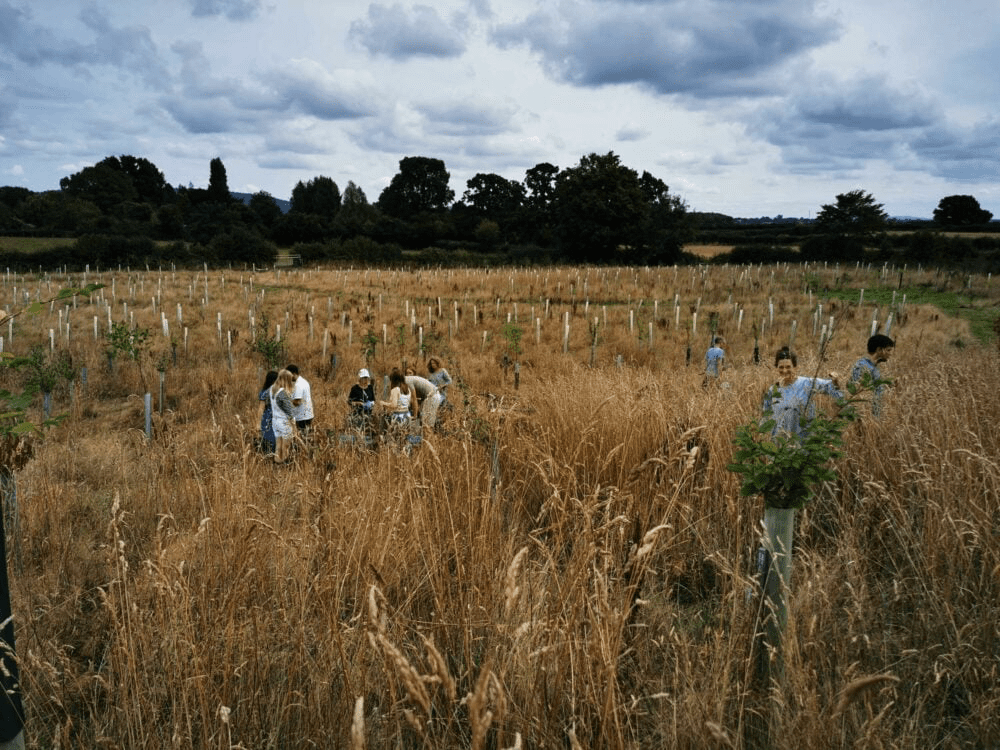When a group of Positive News readers in Herefordshire found themselves despairing at the destruction of the Peruvian rainforest, they decided to do something about it by planting trees.
On the surface, the ancestral rainforest territory of the Wampispeople of north-eastern Peru bears little resemblance to the English county of Herefordshire. Yet the areas are inextricably linked,thanks to the grit of a small group of Herefordshire residents who raised £110,000 to protect a patch of the Amazon that is at least the size of their county.
Positive News subscribers Sue and Jeremy Bugler set up The Size of Herefordshire in 2015 out of a desire to protect one of the most biodiverse areas on the planet, while raising awareness of deforestation and the climate crisis close to home. They were inspired by The Size of Wales, an environmental charity founded as an antidote to repeated media use of “‘the size of Wales” ’ as a unit to measure the destruction of natural habitats.
“We thought that was a good idea,” says Jeremy, a former environment journalist turned farmer. “Herefordshire is only 220,000 hectares, arounda 10th of the size of Wales, so we thought that was a target we could manage.”
The couple approached the Forest Peoples Programme (FPP), an NGO that works with Indigenous groups around the world. Those at the FPP told them that £110,000 would enable the charity to help protect asubstantial area of Amazonian rainforest belonging to the Wampis, a 13,000-strong Indigenous group living in north-eastern Peru, near the border with Ecuador.
The Buglers divided a map of Herefordshire into squares of 10 hectares each and set about approaching locals with the offer to, in Sue’s words, “buy their squares” for £5 a pop. They also launched a tree-planting project, where people could sponsor one of 900 new trees in a three-acre patch of woodland on the Bugler’s own land. “The idea,” explains Sue, a teacher turned farmer, “was ‘plant here, protect there’. That was very successful because people really appreciated the fact that they could plant trees for their community here and know that they were protecting rainforest at the same time.”
The money raised helped the Wampis people secure legal recognition of the boundaries of their lands – which total around 1.4m hectares of pristine rainforest – from the Peruvian government. This has enabled the group to take legal action against gold miners and oil prospectors exploiting their land. When the Wampis took the state oil company PetroPeru to court for drilling in their territory, judges found in the group’s favour in 2019, forcing the company to remove its rigs, clean up and pay compensation.


The benefits of their fundraising have not just been financial. In 2016, a Wampis man named Shampiom came to the UK to meet the group.
“We say that he visited four great European cities: Paris, Amsterdam, London and Hereford,” Jeremy jokes. “He gave a talk which was very well attended and answered questions very frankly. When people said:‘How do we know that this money is going to protect the rainforest forever?’, he said: ‘We don’t, I can’t give you that assurance, it depends on so many factors’, which was honest and true, as it’s impossible to know whether future generations will be as committed as the current generation is.”
The health of the rainforest also depends on the integrity of the Peruvian government in upholding legal protection of the land and deterring oil drilling and gold mining there.


The Size of Herefordshire also sent a film crew to Peru to make a documentary about the Wampis’ struggle to protect their land, which has been a useful tool in engaging local schools, says Sue.
The film crew may have returned home but there’s still a little piece of Herefordshire left on Wampis territory: a boat named the Hereford that the Wampis use to navigate one of the deep green rivers that dissect their land.
“So, if you happen to go up the Morona river in northern Peru you might come across the Hereford,” says Sue. “We have that link.”
Images: Dan Haworth-Salter
This article was originally published on Positive.news and was republished here, with permission, under a CC BY-ND 4.0 license.



